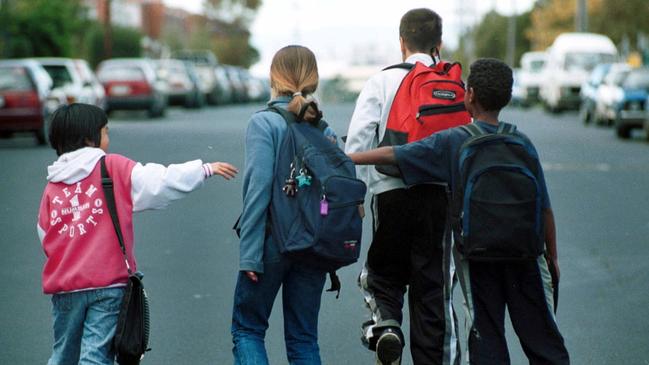Talking Point: An anatomy of wagging
KATHARINE O’DONNELL: understanding why kids wag helps to find ways to get them back in class.

Opinion
Don't miss out on the headlines from Opinion. Followed categories will be added to My News.
AN Australian study has shown that the typical Australian primary school student misses 16 days of school a year — that’s 96 days across their whole primary school period or almost two terms in primary school.
The average high school student (7-12) misses 24 days per year — that’s 144 days or almost three school terms during their high school time.
The Education Act 2016 created the Office of the Education Registrar to administer a new Compulsory Conciliation Conference process to try to find reasons for non-attendance and bring all necessary parties to the table to resolve them.
Since the middle of 2017 when the legislation took effect the OER has been running these conferences around the state. They are run by an independent conciliator at a neutral venue. Most often the participants include the principal, a social worker perhaps a teacher, the parent(s), the child, and any others who may assist to resolve the non-attendance.
The conference will discuss issues preventing attendance and come up with ideas to resolve them. Those recommendations are sent to the Registrar who makes formal requirements that the parties are obliged to follow.
Conferences will be reconvened if necessary to keep the parties on track.
There is still a residual power to refer to the Magistrate’s Court where a parent remains uncooperative and persists in not sending their child to school. However these are very much the exception.
An example is a conference held for a young prep student in late 2017. The student’s attendance was 26.8 per cent. There were requirements made of both the parent and the school. The child’s attendance in 2018 rose to 76.9 per cent and to 83.1 per cent in 2019. Without intervention it is highly likely that that student’s attendance would have remained low through compulsory education resulting in increasing difficulty in engaging through high school.
A study out of Western Australia focuses on attendance patterns of over 415,000 Australian students from 2008-2012.
The study used attendance data, enrolment data and NAPLAN results over this five-year period.
The study found students establish what was described as their “attendance careers” in primary school — the patterns of attendance established as early as Year 1 were a strong predictor of future attendance. Of particular relevance to Tasmania, the study found that “students in schools with a lower socio-economic index, Aboriginal students who were highly mobile and those whose parents had lower levels of education and occupational status had lower levels of attendance on average. These attendance gaps were established early (by at least Year 1).”
The pattern of attendance in Year 1 is highly predictive of the pattern of attendance in coming years. This means we have a small window in which to effect change and early prevention is vital. Of particular concern is the finding that low socio-economic status is an indicator of attendance risk.
The research showed that if non-attendance couldn’t be addressed in the early years (before Year 3), then it would require individual targeting tailored to particular circumstances after that year for successful outcomes. Prior to the introduction of the Education Act 2016 in Tasmania, the only avenue available to schools to tackle non-attendance was prosecution through the courts. This was a wholly unsatisfactory approach to responding to the problem. Even if successful, prosecution only allows for the imposition of a fine. The underlying reason for the non-attendance is not addressed. It is therefore unlikely to be resolved.
It is imperative we take non-attendance at school seriously but that does not mean we need to be punitive. We will get far better results working with families, capitalising on the work of Child and Family Centres, of Launching into Learning and Learning in Families Together and enabling families to take control and learn how to resolve non-attendance issues.
As schools change and Year 9-12 options broaden and include training and trade options alongside tertiary study and we develop highly individual programs for children, we are doing them a huge disservice if we are not giving them every chance to participate.
Katharine O’Donnell is the Registrar responsible for administration of the Compulsory Conciliation Conferencing process.
This is an edited extract originally delivered as part of the Dr Ann Shorten Memorial Oration at the Australia and New Zealand Education and Law Association conference in Melbourne 2019.


